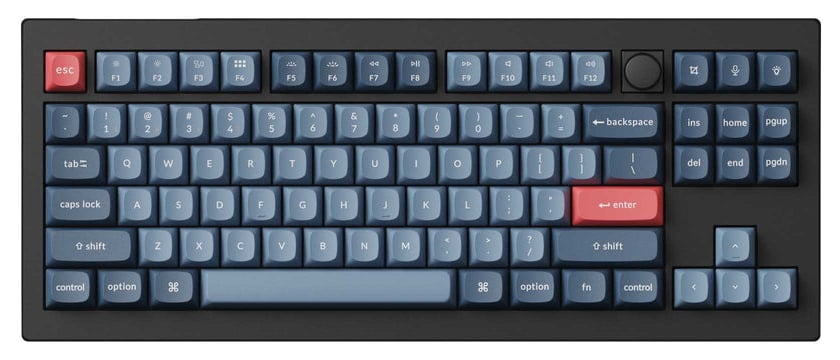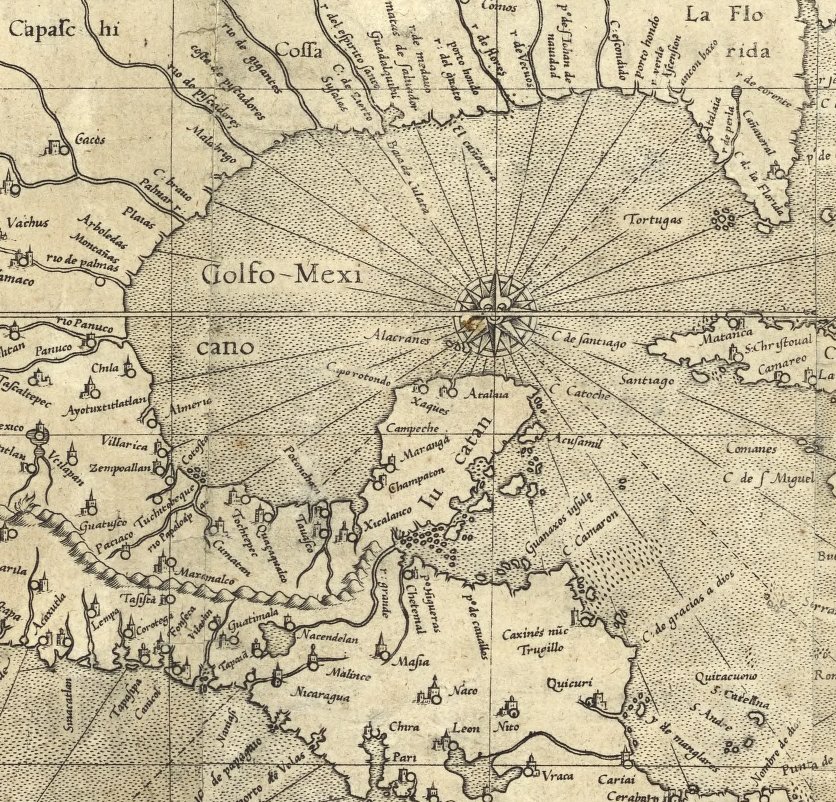Instances of haptic nostalgia
Pianos, typewriters—basically, if it has a keyboard, I’m in favour of it. So when I tell you that I bought a mechanical keyboard for the computer a month ago, some of you might well be surprised that it’s taken me this long to get one. I’m a little surprised myself—I’ve been thinking about it for years.

What I ended up with is a Keychron V3 Max. Keychron makes a dizzying number of customizable entry-level keyboards. This one is what’s called an 80% tenkeyless (TKL) design: everything but the number pad, but with a full cluster of navigation keys to the right of the qwerty. There are smaller keyboards (65%, 70%) but I wanted those dedicated pgup and pgdn keys in a familiar layout; I just didn’t need the number pad. Wireless and wired modes, Mac keys by default (which was a big help in deciding to pull the buy lever: I haven’t used Microsoft in 23 years, I don’t need a Windows key on my keyboard).
Mechanical keyboards have a fandom, because of course they do, and during my research I got a fire hose of it in the face; but because fans have different priorities than mere users you have to absorb the lore with a bit of side-eye. For one thing, a lot of them seem very into the sound of the keyboard: look at the titles and thumbnails of their YouTube videos and you’ll see a word over and over again: THOCK. As in, is it/does it (bring the) thock? Their reviews include sounds of typing the way car YouTubers invariably have a clip of the exhaust noise as they rev the engine. (Very ASMR. Wow.) They have opinions about the switches underneath the keys, each of which sound and feel different. (Mine are Banana switches, if you’re curious, for tactile reasons—more on which in a moment.) They’ll take their keyboards apart, replace switches and keycaps, add foam under the keys, reprogram the LED backlights, and basically customize their rides (plural, because once again of course) every way possible. When your fandom is about your tools, the tools stop being a means to an end.
A lot of it doesn’t do much for me because I’m on the tactile side of things: I don’t care so much about how the keyboard sounds (though, to be fair, a loud clicky keyboard is as good a way of saying go away, I’m working as anything), but it does matter to me how it feels. Sure, I can type on a low-profile membrane keyboard like an Apple keyboard—I can type on anything—but a good, old-school keyboard with mechanical switches is a very nice thing to be typing on when you’re on a roll. I’m a very fast typist: I was last clocked at 103 wpm, so this is worth the investment.
Which is not to say it’s a perfect experience. This is a bigger, bulkier keyboard than I’ve used in close to 20 years. It’s thicker, so the keys are higher off the desk: I might need to get a palm rest; keyboard drawers haven’t been a thing since mechanical keyboards were the norm (and keyboard drawers in turn were a replacement for the typewriter desk, which was a few inches lower to accomodate a healthier typing position). In hindsight maybe should have gotten one of the low-profile keyboards, like the K1, but they weren’t in stock. At any rate, I’ve gotta make sure this keyboard doesn’t give me an RSI; my hands get abused enough as it is.
The extra navigation keys mess with my muscle memory: I keep expecting certain keys to be elsewhere: enter and backspace aren’t at the right edge any more. The extra key travel is nice for typing, but makes simple keyboard shortcuts feel, well, weird—a little too substantial? And while I love the shape of the keys—they remind me of terminal keys from the 1970s, and cup almost as well as the keys on my Facit and Olympia typewriters—they’re just a tiny bit too small for my fingertips.
My nitpicks about this mechanical keyboard are basically haptic. So were the reasons for getting it in the first place. But then the same is true of all keyboards. The touch of a grand piano—the feel of a double escapement, the way the keys bounce back to your fingers, the additional control you have over volume—is the main reason to pay the money for one. The sound is almost secondary. And a big difference between typewriters is tactile: I love me my Facits because the keys cup the fingers so well and the key travel is deep, especially on the office machines; Smith-Coronas and Olympias are snickety-fast in quite different ways, Adler portables too but their keycaps are small and high and your fingertips end up hitting the edges. I could go on but probably shouldn’t. I have opinions on how every single one of our typewriters feels, and suddenly I realize I’m not so different from the mechanical keyboard fanatics.
(Title nicked from Kottke.)
The Gulf of What Now?

Apropos of Trump announcing he was renaming the Gulf of Mexico as the Gulf of America, I decided to look into how long the Gulf of Mexico has had its name. Turns out, a lot longer than many of us thought: at least 456 years. I wrote up my findings in a Map Room post: “Naming the Gulf.”
A lot of discourse about the change (which, dumb, but relatively harmless as his moves go, and easy enough to undo once he’s gone) has been about whether he can, how he can, and will cartographers go along with it; and yes I’ve covered that discourse in a couple of follow-up posts (1, 2), but that’s getting into the weeds. It’s important to establish some truths first.
